Doing business
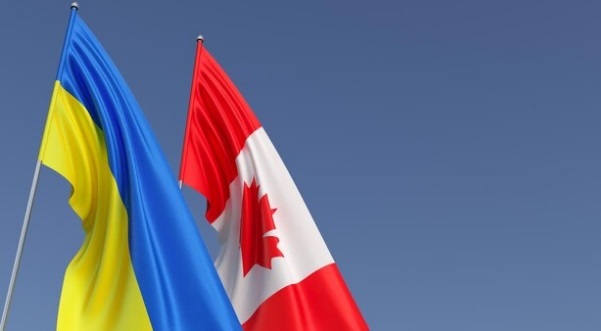
Since the first days of the full-scale war, Canada has been helping the Ukrainian economy, strengthening the defence capabilities of the Armed Forces of Ukraine, supporting the vulnerable groups of society, and investigating war crimes. In total, since the beginning of the invasion of russia in Ukraine, Canada has allocated more than $10 billion in general support for Ukraine, including about $3 billion in military aid. Moreover, Canada cooperates with international partners and the G7 countries to bring russia to justice, particularly through the confiscation of the sovereign assets of russia.
In February of this year, President of Ukraine Volodymyr Zelenskyy and Prime Minister of Canada Justin Trudeau signed the Ukraine-Canada Security Cooperation Agreement. This agreement establishes a strategic security partnership between the two countries, which identifies areas for enhanced bilateral cooperation in various fields, including defence, stability and resilience. Under the agreement, the Canadian government plans to increase military spending over the next 5 years to provide Ukraine with lethal and non-lethal military assistance. About $1.2 billion is allocated in the budget for this purpose.
In 2024, Ottawa will provide more than $2.2 billion in macro-financial and defence assistance to Ukraine. Budgetary support will amount to $1.8 billion, of which $1.5 billion has already been transferred through the IMF Special Account, with an additional $293 million to be disbursed in the coming months.
At the same time, the country will allocate $159 million to finance the reconstruction projects of Ukraine through the EBRD and projects under the programme to support peace and security in Ukraine, including humanitarian demining – $55.8 million.
Canada has announced a package of measures to support Ukraine worth approximately $38.1 million, including: $14.5 million to restore damaged energy equipment and infrastructure; $10.9 million to support vulnerable children, youth at risk and reintegration of displaced children returning to Ukraine, as well as improving access to justice for victims of war crimes; $11.2 million to help Ukraine obtain the technical support and training necessary for economic reforms and EU accession and to demine Ukraine. In addition, Canada will provide $1.5 million to support the safe and secure operation of nuclear facilities in Ukraine through the International Atomic Energy Agency.
Canada has joined the drone coalition and, as a member, will look for ways to increase the capabilities of Ukraine in the field of unmanned aerial vehicles. Thus, in summer, the country will start transferring 450 SkyRanger R70 unmanned aerial vehicles to Ukraine. Overall, Canada plans to provide the Armed Forces with 900 SkyRanger drones.
The country is also allocating $3 million for the production of drones by the Ukrainian defence industry. This is the first time Canada has made a direct contribution to the production of military drones in Ukraine. The donation was made in cooperation with the United Kingdom. Also, Canada will make an additional contribution of about $13 million to the initiative of the Czech Republic to purchase and deliver large-calibre ammunition to Ukraine..
In May, the Government of Canada announced more than $55 million in funding for a German-led initiative aimed at rapidly delivering modern air defence systems to the Armed Forces of Ukraine. In addition, Ukraine will receive more than 2,000 CRV7 unguided missiles from Canada, which it was going to utilise.
Canada has allocated more than $44 million to Ukraine to support the sustainment of F-16 fighter jets. The funds will be used to purchase spare parts, weapons, avionics and ammunition for F-16s to be used by Ukraine. It also contributes to multinational efforts to train pilots, maintain and support Ukrainian F-16s. Besides, the country extended its mission (CAF) to provide military training to the Ukrainian military until March 2026.
At the end of May, the Canada-Ukraine Foundation handed over 10 Ford Transit class C ambulances made in 2023 to Ukraine. The vehicles are specially designed to transport seriously ill patients. On June 16, the Government of Canada announced $15 million in additional funding for the return of Ukrainian children who had been illegally taken to russia.
Over the past two years, the Ukrainian Humanitarian Appeal has raised more than $51 million to help Ukraine and received in-kind donations worth another $20 million. The humanitarian supplies are directed to: assistance to internally displaced persons, medical care, emergency shelter, food security, and demining. We also organised 4 missions of plastic surgeons who operated on 95 victims with severe facial injuries and purchased 39 ambulances for the Ministry of Health of Ukraine.
The Government of Canada, in cooperation with the UN International Organisation for Migration (IOM), donated 4 generators with a capacity of 440 to 900 kW to the city of Kamianske in Dnipropetrovsk region for critical infrastructure.
The development of mutually beneficial trade and economic cooperation also remains an important priority for both countries. An analysis of the export and import operations of Dnipropetrovsk region with Canada demonstrates a high level of partnership, as Canada is an important trade partner of the region.
According to the results of 2023, the volume of exports of goods from Dnipropetrovsk region decreased by 14.2% to $29.9 million. Among the products that are in greatest demand among Canadian consumers are inorganic chemicals, knitted clothing and accessories, ships, machinery and equipment, etc.
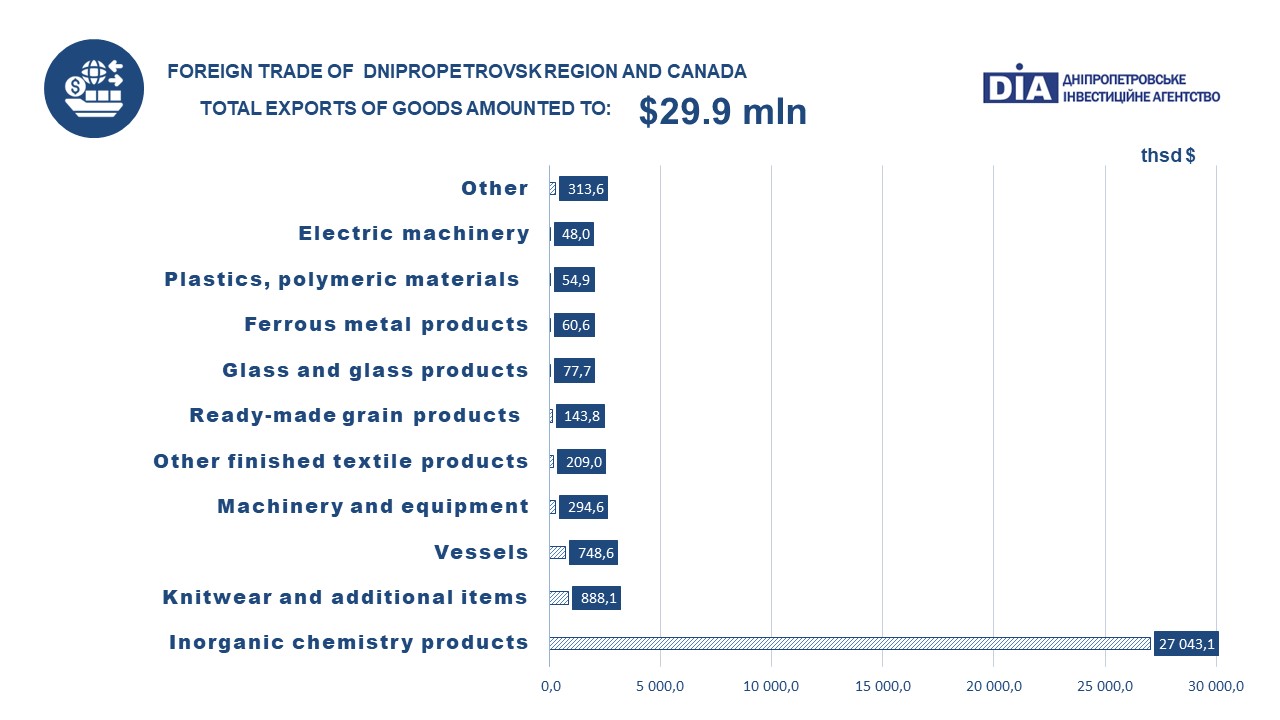
Export operations were carried out by 39 companies from Dnipropetrovsk region. The main exporting companies are chemical and light industry enterprises and machine-building companies.
TOP-5 exporting companies (ranked by volume of exported products):
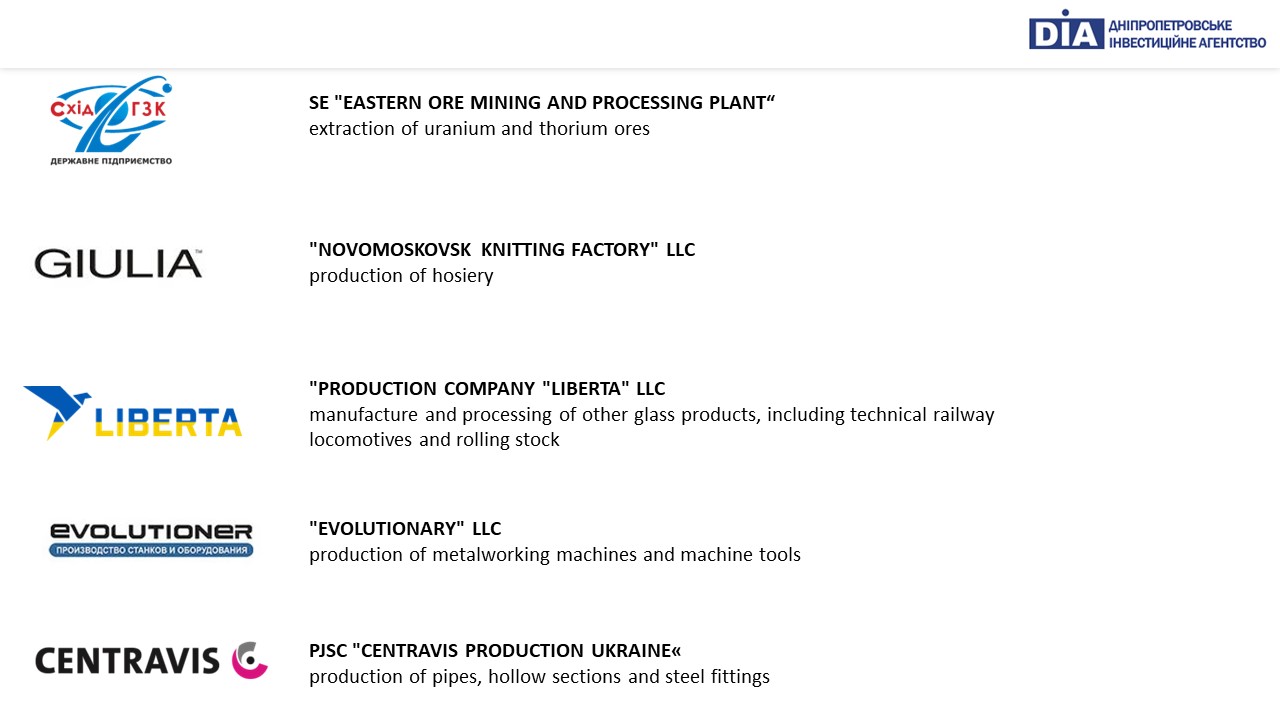
Imports of goods from Canada to Dnipropetrovsk region totalled $10.2 million and increased by 69.2% compared to 2022. Traditionally, the region purchased electrical machinery, food products, machinery and equipment, means of land transport, and other goods.
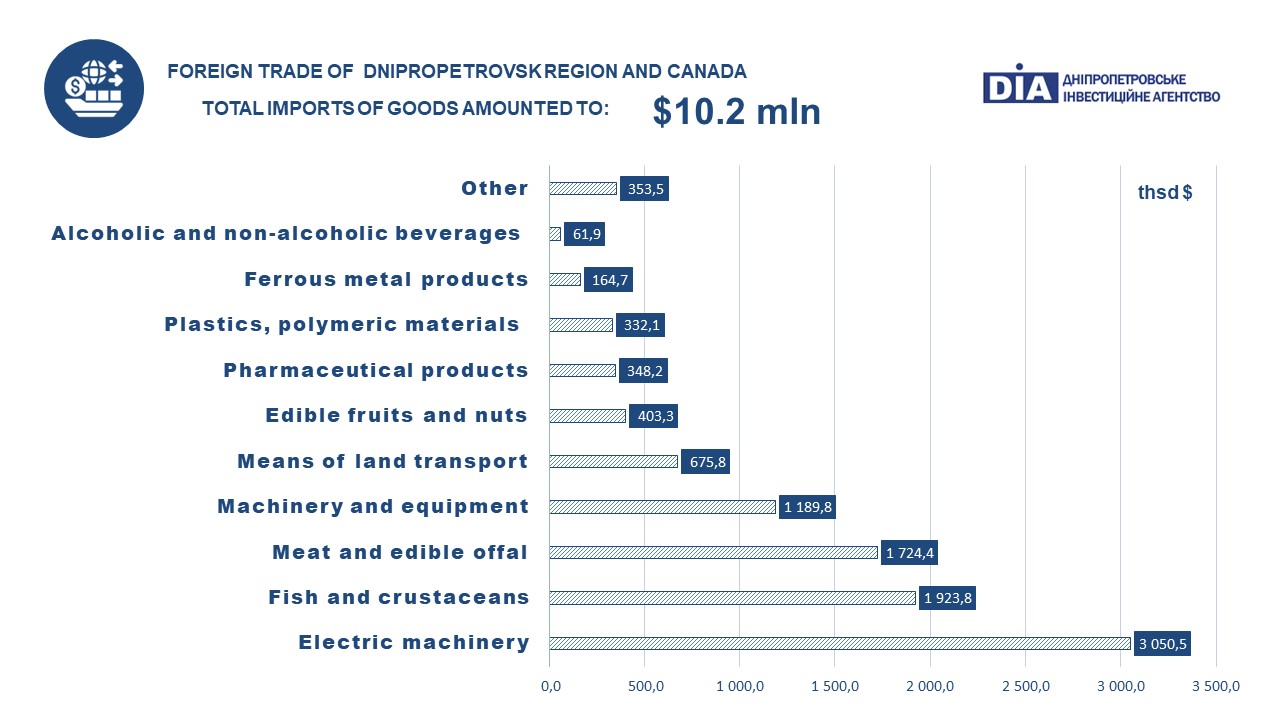
Import operations were carried out by 77 importers.
TOP-5 importers (ranked by volume of imported products):
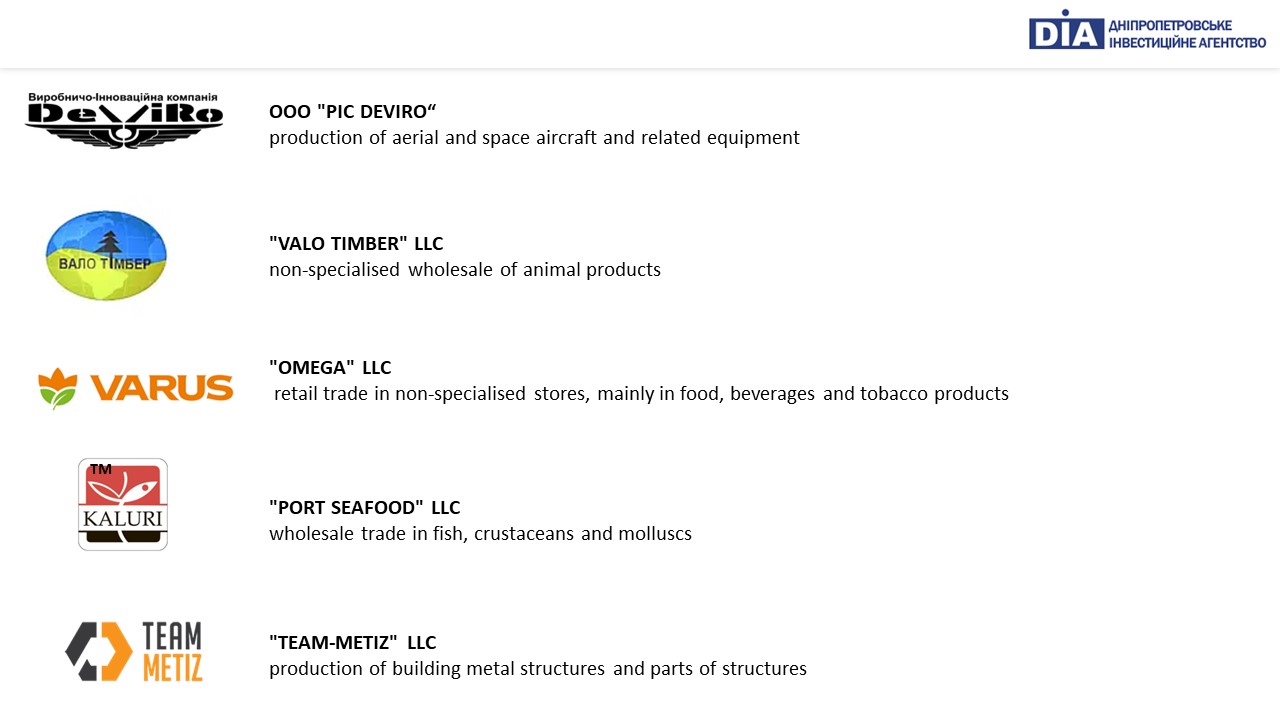
Imports were mainly carried out by trade, machine-building, processing and food companies.
Source: information for the article was taken from open online sources